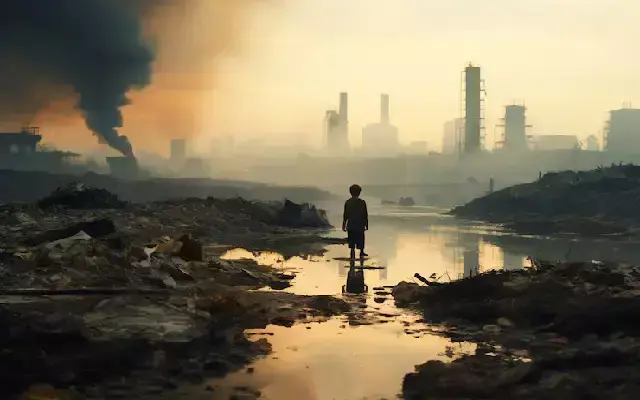
Pollution eats Bengaluru’s buildings; hidden threat revealed
As we go about our daily lives in Bengaluru, it’s easy to overlook the subtle yet insidious threat lurking in the air. Air pollution, a well-documented health hazard, has been making headlines for years. However, a recent study published in Nature has revealed a lesser-known consequence of long-term exposure to fine dust particles: it’s corroding the city’s concrete and steel structures.
The study, spanning from 2013 to 2021, covered 12 pollution-prone locations in Bengaluru. The researchers, led by Dr. Srinivas G. Rao from the Indian Institute of Science (IISc), analyzed the effects of particulate matter (PM2.5 and PM10) on the city’s buildings. Their findings are alarming, to say the least.
The silent corroder
PM2.5 and PM10 refer to fine dust particles with diameters of 2.5 micrometers or less and 10 micrometers or less, respectively. These particles are so small that they can easily be inhaled and cause respiratory problems. However, their impact on buildings is just as significant.
The study found that long-term exposure to PM2.5 and PM10 particles accelerates the corrosion process in concrete and steel structures. This is because these particles contain sulfur dioxide, nitrogen oxides, and other pollutants that react with the building materials, causing them to degrade faster than usual.
Concrete casualties
Concrete, a ubiquitous building material in Bengaluru, is particularly vulnerable to pollution. The study found that concrete structures in polluted areas showed significant signs of degradation, including cracks, discoloration, and reduced strength. This can lead to structural weaknesses, compromising the safety and integrity of the buildings.
For instance, the researchers analyzed a concrete beam from a building in the heavily polluted area of Bellandur. They found that the beam had lost 20% of its original strength due to pollution-induced degradation. This could have serious implications for the building’s structural integrity, potentially leading to collapse or costly repairs.
Steel structures under threat
Steel structures, another common feature of Bengaluru’s urban landscape, are also affected by pollution. The study discovered that long-term exposure to PM2.5 and PM10 particles causes steel to corrode faster, leading to reduced strength and increased risk of failure.
The researchers analyzed steel samples from buildings in pollution-prone areas and found that corrosion rates were significantly higher than expected. This could lead to structural failures, particularly in critical infrastructure like bridges and high-rise buildings.
The human cost
The impact of pollution on buildings is not just an economic concern; it also has significant human consequences. When buildings fail or deteriorate prematurely, the risk of injury or loss of life increases. Moreover, the cost of repairs and maintenance can be substantial, diverting resources away from other essential services.
The study’s findings highlight the need for policymakers and building owners to take immediate action to mitigate the effects of pollution on Bengaluru’s buildings. This could include implementing measures to reduce pollution, such as increasing the use of public transport and promoting cleaner energy sources.
The way forward
While the study’s findings are alarming, there is hope for change. By acknowledging the hidden threat of pollution to Bengaluru’s buildings, we can work together to develop strategies for reducing the city’s pollution levels.
Some potential solutions include:
- Improving air quality monitoring: Accurate data on pollution levels is essential for identifying areas that require immediate attention.
- Increasing the use of cleaner energy sources: Transitioning to cleaner energy sources like solar and wind power can reduce pollution levels.
- Enhancing building design and maintenance: Incorporating pollution-resistant materials and designs into building construction, as well as regular maintenance and repair, can help mitigate the effects of pollution.
Conclusion
Air pollution is often viewed as a health hazard, and rightly so. However, this recent study has revealed a lesser-known consequence of pollution: it’s silently corroding Bengaluru’s buildings. As we move forward, it’s essential that we recognize the importance of addressing this hidden threat. By working together, we can create a safer, healthier, and more sustainable city for all.






